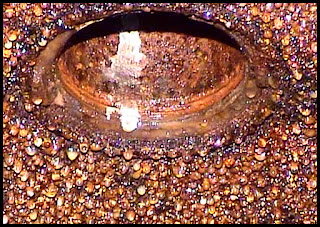Today's edition of the Fuel Marketer News Vendor View column featured some new insights by Tanknology's Kevin Keegan on topical issues related to the new EPA UST regulations.
Specifically, Kevin addresses under-dispenser secondary containment testing and whether the OPW FlexWorks system meets a key standard.
Related to sump inspection requirements in the 2015 revision to the regulations, Kevin also discusses an approach that could potentially offer marketers a significant cost savings strategy.
You can read Kevin's thoughts on these hot regulatory topics, here at Fuel Marketer News online.
To sign up for automatic notifications of any updates to our blog, click on the blue "Join this Site" button to the right.
Thursday, August 25, 2016
Tuesday, August 2, 2016
EPA Study: 83% of diesel tanks have moderate to severe levels of corrosion
The EPA has released the results of the largest survey to-date on corrosion levels in underground storage tanks (USTs) containing diesel fuel -- and the results are staggering.
The research showed that 83 percent of the USTs studied exhibit moderate to severe corrosion.
 Worse, only 25 percent of the owners of those tanks with corrosion were aware of it prior to the study.
Worse, only 25 percent of the owners of those tanks with corrosion were aware of it prior to the study.
That, according to Carolyn Hoskinson, Director of the EPA’s Office of Underground Storage Tanks (OUST) is troubling – because that corrosion “could result in an increased chance of releases of fuel to the environment and subsequent groundwater contamination.” Every UST operator’s nightmare.
The results of the survey, conducted by the renowned Battelle research institute, were not a surprise to us at Tanknology, as we performed all the fieldwork for this study as a partner of Battelle. Among other services, our TankCam® remote video inspection service provided the high-resolution images used in the analysis and the EPA’s final report.
In addition to the prevalence of corrosion in the diesel tanks inspected and the lack of awareness by owners, some ‘key takeaways’ the EPA identified include:
For more information about our TankCam remote video inspection service, or any of our tank inspection or testing services, visit our website or call us at 1-800-964-1250.
The research showed that 83 percent of the USTs studied exhibit moderate to severe corrosion.
 Worse, only 25 percent of the owners of those tanks with corrosion were aware of it prior to the study.
Worse, only 25 percent of the owners of those tanks with corrosion were aware of it prior to the study.That, according to Carolyn Hoskinson, Director of the EPA’s Office of Underground Storage Tanks (OUST) is troubling – because that corrosion “could result in an increased chance of releases of fuel to the environment and subsequent groundwater contamination.” Every UST operator’s nightmare.
The results of the survey, conducted by the renowned Battelle research institute, were not a surprise to us at Tanknology, as we performed all the fieldwork for this study as a partner of Battelle. Among other services, our TankCam® remote video inspection service provided the high-resolution images used in the analysis and the EPA’s final report.
In addition to the prevalence of corrosion in the diesel tanks inspected and the lack of awareness by owners, some ‘key takeaways’ the EPA identified include:
- Severe corrosion is not limited to the tanks themselves, but also prevalent in all the metal components of the fueling system. This is true in steel as well as fiberglass tanks.
- The condition is widespread – affecting diesel fueling systems in multiple regions of the country.
- There are approximately 100,000 federally-regulated diesel tanks in use in the US, according to PEI.
- Ethanol was present in 90 percent of the 42 tanks sampled, “suggesting cross contamination of diesel fuel with ethanol is likely the norm.”
- Tanknology technicians collected fuel samples from each tank system in the study and Battelle's testing against several fuel specifications and guidelines indicated that "many UST systems may be storing fuel that is less clean and dry" than those standards intend.
- The presence of particulates and water in the fuel were “closest to being statistically predictive factors for metal corrosion,” though the EPA said the findings don’t necessarily signal causation.

- Visual inspection of fuel filters and tank system access points for signs of corrosion.
- Utilizing a UST service company (such as Tanknology) to further evaluate the extent of corrosion in the tank system. Tanknology could employ the same TankCam remote visual inspection service used in the EPA study to provide a clear look inside your tank system, capturing potential corrosion on video for further assessment.
- Repairing or replacing equipment to ensure proper functionality.
For more information about our TankCam remote video inspection service, or any of our tank inspection or testing services, visit our website or call us at 1-800-964-1250.
Subscribe to:
Comments (Atom)


